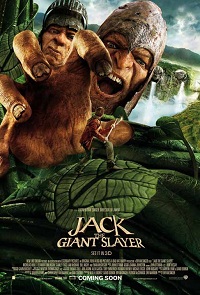 With Jack the Giant Slayer coming out in a few days, and the release of Hansel and Gretel: Witch Hunters a couple weeks ago, it seems like the right time to evaluate the best cinematic adaptations of children’s books, for that film genre is as old as the medium itself. Naturally, since it is easier to adapt an established story or idea than it is to invent one out of thin air, some of the first fictional film shorts were based on classic children’s stories and fables (Santa Claus being one of the first in 1898). It’s an established practice, and one that has seen varying levels of success throughout the years: sometimes to the horror of those young fans hoping for a film pulled straight out of their own imaginations.
With Jack the Giant Slayer coming out in a few days, and the release of Hansel and Gretel: Witch Hunters a couple weeks ago, it seems like the right time to evaluate the best cinematic adaptations of children’s books, for that film genre is as old as the medium itself. Naturally, since it is easier to adapt an established story or idea than it is to invent one out of thin air, some of the first fictional film shorts were based on classic children’s stories and fables (Santa Claus being one of the first in 1898). It’s an established practice, and one that has seen varying levels of success throughout the years: sometimes to the horror of those young fans hoping for a film pulled straight out of their own imaginations.
Some adaptations have pulled it off, however, and have provided a version of a beloved children’s story that is both thematically true, and visually impressive. To make it onto today’s list, then, a film had to remain mostly loyal to its source (plot-wise), demonstrate a commitment to the original book’s visual look, and remain exciting and engaging all the while. There were a few books that straddled the line between adult and children’s literature, something that left their film adaptations out in the cold in terms of today’s list; these included The Wizard of Oz (a political allegory), The Hunger Games (a young adult series), The Princess Bride (an adult novel), and 20,000 Leagues Under the Sea (a 19th century sci-fi adventure).
To keep things fair, these were excluded so as to make room for the more classic children’s tales. Some honorable mentions that didn’t quite clear the quality bar included Holes, The Indian in the Cupboard, Watership Down, Stuart Little, Where the Red Fern Grows, Little Red Riding Hood, Bridge to Terabithia, Winnie the Pooh (2011), Horton Hears a Who, Coraline, Curious George (2006), How the Grinch Stole Christmas, Charlotte’s Web, and Hook (Peter Pan deserves better). So! Now that we’ve got all that out of the way, shall we?
There had to be a few Roald Dahl representative in this ranking, for there are some things in this world too important and precious to ignore. The author of some of the 20th century’s most thoughtful yet gripping children’s literature, Dahl gave his audience a number of gems that also went on to enjoy a second life via big screen adaptations. When looking through the man’s film catalog, there were a number of strong contenders (James and the Giant Peach, B.F.G., and Matilda, to name a few), yet the one that came out right before the author passed away just happens to be this journalist’s personal favorite. The story of an orphaned boy and his grandmother, the movie followed the book’s story pretty closely until the very end (a change Dahl reportedly hated). Its premise held that the world was populated by a race of genocidal witches who were constantly working to exterminate the children of the world. The protagonist (who in the film version was named “Luke”), stumbled upon the yearly meeting of England’s witches, got turned into a mouse, but then poisoned the bitches that had poisoned him! It was all a blast, with the eventual outcome being that Luke saved the day and conquered the evil forces of the world using little more than his wits and daring. Perhaps the most unapologetically violent Dahl-based movie, this is probably why it has always remained a dark-horse favorite of mine. Still, in terms of overall quality, it’s hard to argue its merits against…
Although it has been done dozens of different ways in a gaggle of films spanning over a century, Tim Burton did as complete and loyal a job in adapting Alice in Wonderland as could be expected with the tools at his disposal. With a cast that included Anne Hathaway, Johnny Depp, Helena Bonham Carter, Crispin Glover, and Alan Rickman, it would have taken some earnest, dedicated effort to screw this one up. Although Burton did give his audience some grief by thinning his second act into a somewhat aimless walkabout (Mr. Melin had plenty to say about this in his review), the overall result was fairly true to Lewis Carroll’s story. Did it have some faults? Sure. But Burton’s version of Alice in Wonderland provided the stunning visual feast that devotees of the children’s book have been waiting for all their lives, especially when one considers previous attempts to bring the story to the screen. This particular journalist is reminded of the 1985 T.V. movie, which looked like its costumes and sets were stolen, Ed Wood-style, from the B.B.C.’s Dr. Who film lot. No, I’d say Burton did a decent enough job considering the material, yet didn’t quite hit the high-quality mark this next notable director brought to his children’s book adaptation…
8. The Fantastic Mr. Fox (2009) 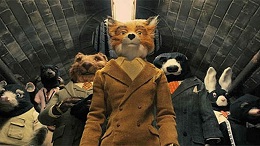
Yet another Roald Dahl offering, The Fantastic Mr. Fox had the added benefit of having Wes Anderson on its side, whose thoughtful and light-hearted direction kept this literary adaptation humming right along. The story of Mr. and Mrs. Fox (George Clooney and Meryl Streep, respectively), the film followed their trials as the young family tried to carve out a safe existence both for themselves, but also their kin. Although Mr. Fox had given up the dangerous night-raid operations that so frightened his spouse, his decision to relocate their domicile within striking distance of three sadistic farmers only exacerbated their situation. Anderson’s sly use of classic cinematic imagery (i.e. The Great Escape) kept the film appropriately light for the kids, yet engaging enough for adults hoping against hope for a tolerable couple of hours. Although it was one of the lesser-known Dahl offerings, Anderson’s 2009 treatment has assured the story will enjoy an extended life for decades to come. Indeed, like this next film, what was once a somewhat obscure kiddie tale blossomed into a classic piece of art that will likely enjoy popularity through several different generations…
The last film Walt Disney personally developed and oversaw, The Jungle Book had all the hallmarks of the man’s legendary Midas touch. The story of an orphaned human raised in the jungles of India for the first ten years of his life, the film made the bold choice of populating its cast primarily with beasts. This was a departure from previous Disney entries from that era, like Sword in the Stone and 101 Dalmatians, where humans still provided the main thrust of the events. And while the main character of The Jungle Book, Mowgli, was certainly a human, his characteristics and company were anything but, and provided the backdrop for one of Disney’s most popular film offerings. Although it was ostensibly about a young boy coming to terms with his humanity and place in the world, it easily served as an allegory to any young child who feels like their wild nature and bearing sets them apart from the adult world around them. By the end of The Jungle Book, Mowgli learned that he belonged amongst his own kind, just as kids all must sadly learn that their place is within the responsible realm of grown-ups: the fun of adolescence like the wild jungle life that simply cannot go on forever. Say, speaking of outcast youths learning about their place in the world, we ought to spend a moment discussing…
Based on the late-19th century Italian children’s book, Disney’s Pinocchio is as fresh today as it was during its initial release over seventy years ago. Shit, come to think of it, this would never get by the in-house censors these days, for this flick had underage drinking, horrific boy-to-donkey transformations, and a scary-as-fuck whale that made Jaws look like a fat catfish. A surprisingly dark tale that tracked one mutant puppet’s journey through a life of hedonism and deceit, Pinocchio still works as a compelling piece of cinema for both adults and children. If only from a visual standpoint, the movie proved how far Disney had come in just the handful of years following the release of Snow White and the Seven Dwarves, where the animation was crisp yet still somewhat fuzzy. The ocean finale vignette was especially striking, and set a new standard for action cinema both inside the realm of animated features, and outside of it as well. Although it could never, even if given seventy more years, make as much money as this next film has in just a couple months, the quality of Pinocchio has allowed it to stand the test of time, and puts it in good company here today…
5. The Hobbit: An Unexpected Journey (2012) 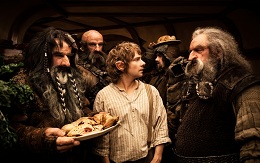
One has to give Peter Jackson and company credit: they sure as hell didn’t cut any corners with this one. Yes, convinced that Tolkien’s original jaunt through Middle Earth needed not one, not two, but three installments to fully capture its majesty, The Hobbit’s first chunk landed in theaters just a couple months ago, and got the nod of approval from most of the die-hard fans. Yes, it kind of looked like a Mexican soap opera with the increased frame rate, and those who went in drunk, stoned, and/or frying on hallucinogens lost their buzz by the start of the third act, but it was still quality. There are some who have argued that a more restrained, less-thorough approach might have brought the story’s larger themes out in a few less hours, yet those who have read and cherished Tolkien’s children’s book seem to appreciate the extra time Jackson took to introduce all the characters and plot points. Indeed, if the recent Lord of the Rings adaptations taught audiences nothing else, it’s that Jackson is a man who takes his time, and that those who stick with him often find the rewards well worth the journey. This level of commitment to a children’s story outlining the trials of dwarves, goblins and dragons rarely gets such thoughtful treatment, and for this, Jackson and The Hobbit got a nod.
4. Where the Wild Things Are (2009) 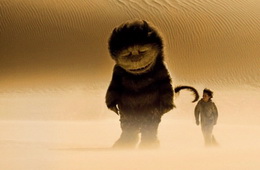
A personal favorite of Scene-Stealers editor-in-chief, Eric Melin, the film adaptation of Maurice Sendak’s Where the Wild Things Are accomplished the nearimpossible: it remained thematically faithful to its source whilst expanding greatly upon the established narrative. The story of Max (Max Records), a boisterous 8 year old with an active imagination, the film went along with the boy as he entered an imaginary land populated by friendly beasts. Although Spike Jonze’s film expanded on Max’s home life, and the adventures he and the Wild Things enjoyed on their magic island, the basic elements of the original story were all in place and remained true to the book’s basic themes. On the island, Max learned how his behavior was effecting his mother, and gained an appreciation for what it means to be a part of a community, be it full of beasts or one’s own family (although sometimes those lines cross). An imaginative, tender treatment of one of the most cherished children’s books of all time, Where the Wild Things Are hit all the right notes, and did what many films of this sort are terrified of: it gave itself over to the source material. Indeed, this film worked so well because it didn’t try to get clever, something this next film’s successful production inspired after it broke new ground in children’s cinema over twenty years ago…
Widely credited with kicking off what has become known as the “Disney Renaissance,” The Little Mermaid effectively rebooted Disney as a whole. In the 1980’s, Disney was struggling to keep itself in the black after it experienced one of its deepest lulls in company history. Back then, Don Bluth and company were knocking the shit out of Disney in the box office, for An American Tail clobbered its Mousey rival’s offering (The Great Mouse Detective) when the two were put head-to-head, and what’s more, Bluth did it again when he released The Land Before Time against Oliver and Company, and ate the latter film’s lunch. By the mid-80’s, it looked like Disney had lost its luster, and newer, more forward-thinking studios would take over in the 90’s and beyond. And then The Little Mermaid came out and changed the game entirely. Bolstered by the success of Who Framed Roger Rabbit, Disney put more resources into Mermaid’s production than they had in any film in decades. The storied studio poured money into the animation effort to give it a look as good as anything Bluth’s company could churn out, and paired it with a fresh soundtrack that would go on to set its own records. The result was cataclysmic, for legions of children and adults alike flocked to the theaters to witness a cinematic phenomenon so influential that it went on to spawn a new golden era at Disney (and within the field of animation as a whole). Still, even with all that behind it, The Little Mermaid doesn’t conjure up half the nostalgia and good-will that this next picture does with almost twice the amount of distance separating us from its original release…
2. Willy Wonka and the Chocolate Factory (1971) 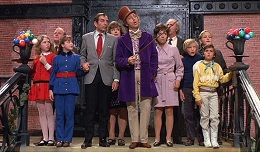
Okay, I admit, while The Witches is my personal favorite of the Dahl adaptations, and The Fantastic Mr. Fox is the most technically impressive, the original 1971 Willy Wonka and the Chocolate Factory is clearly the best film of the bunch. Putting aside my own childhood fantasies about witchcraft and human-to-mouse transformations, it’s hard to argue against this one’s classic-status. Before the magic veil of C.G.I. was dropped between audiences and the big screen, a child could look at a film like this one and truly believe in the fantasy, if only for a while. Sure, you knew that river wasn’t REALLY chocolate, but it was real, and that fat actor kid really did look like he was slurping that shit down! While in the factory, Charlie and the other contestant kids wandered through a diabetic’s dream (or nightmare, I suppose), for the children all seemed to reflect some part of every boy and girl to some degree, something that has kept it relevant all these years. And while Burton and Depp did a fine job with their reboot in 2005, this was one instance where improved special effects didn’t add much to the original imagining. In Gene Wilder, the franchise already had the perfect Wonka, and in the creative, thoughtful hands of director Mel Stuart, the original 1971 film had all the shots, sets, costumes, and Oompa Loompas it needed. A true classic that has demonstrated its impressive legs for more than thirty years, it still has nothing on our #1 selection, based on a children’s literary franchise whose success inspired a rare blank check from the movie studio adapting it…
And why not, eh? If a children’s book series has a devoted legion of fans numbering in the tens of millions, why not put every resource at the studio’s disposal into the film adaptation’s development? That’s exactly what Warner Brothers did when they bought the film rights for the series back in 1999 (for a tidy £1 million), and attached Chris Columbus to direct the first installment. At $125,000,000, it wasn’t a cheap movie to make, yet since all of the pictures have, combined, generated roughly $7 billion (yeah, with a B) in revenue, the decision seems to be working out for Warner Bros. Again, this wasn’t an endeavor the studio entered into half-assed. Buckets, nay, truck-loads of money was spent creating the special effects, sets, costumes, and props for this weird little universe. Furthermore, high-end acting talent was enlisted throughout the course of the film franchise’s run to give each movie an anchor(s) around which the emerging young talent could rely. And while Columbus didn’t stay to direct all the films, much of the core cast remained in place, and provided the necessary pieces for one of the most thoroughly explored and faithfully adapted children’s series of all time. Although fans of the film and book series will argue the merits of one picture over the others for years to come, it should suffice to say that as a series, there has never been this much attention (financial or otherwise) paid to a children’s literary series: the fruits of that labor seemingly bearing out that dedication. For that, as a series, it got the top spot.




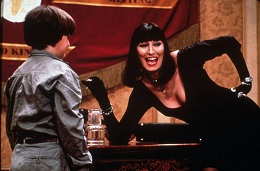
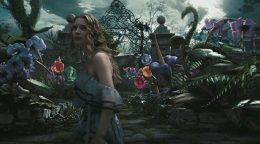
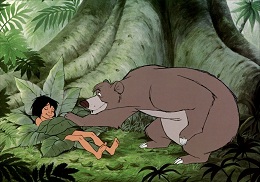
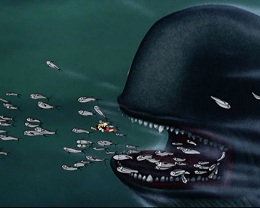
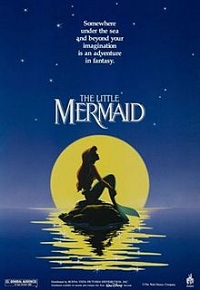
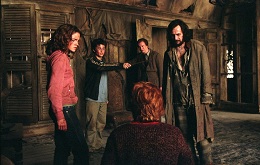

{ 8 comments }
Warren, you always come up with great ideas for lists, and this is no exception. Plus, aside from #9, you once again made excellent choices and well-written as always!
So glade you included “The Witches.” That is one scary piece of kid-friendly filmmaking.
I guess I need to see that one too….
Fantastic Mr. Fox, Where the Wild Things Are, Pinocchio, and Willy Wonka are classics for the ages — and I need to see The Jungle Book again. But there’s really only one Harry Potter movie (maybe two) worth talking about…shame on you, Warren!
Great list, and you are right about the ending of “The Witches” not staying true. My son saw it recently and complained. It had been years since I saw it and never read the book, so I didn’t know better.
But shame on you, Eric (and I guess Warren, too)! “Where the Wild Things Are” being a favorite? This movie is way overrated. I love Jonze, and while he expanded on the narrative, I don’t think it worked out that well. The true test of whether a children’s book adaption works is whether children actually liked it, and I didn’t talk to too many kids that liked this one. It was cool to see these creatures for a little while, but that novelty wore off. But Eric can be idiot sometimes, so I will let it slide.
I do agree with Melin on Harry Potter. Like movies 3 and 1 (in that order) and can do without the rest.
I have to do more thinking about what might be missing, but the first thing that comes to mind is “The Black Stallion”. I’ll go ahead and say it, but I actually enjoyed the Lemony Snicket movie, but I am a big fan of the books.
I have to speak up (as always) for “The Iron Giant”–I’d rank it above everything here–and I’d rank honorable mention “Coraline” a lot higher, too.
I think shrek shoulda been considered, the sequels are eh but the first one was pretty original and made a name for dreamworks animation
^Shrek, even the original, is awful. Period.
Comments on this entry are closed.